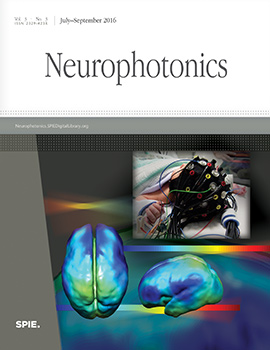François Moreau, Runze Yang, Vivek Nambiar, Andrew Demchuk, Jeff Dunn
Neurophotonics, Vol. 3, Issue 03, 031403, (February 2016) https://doi.org/10.1117/1.NPh.3.3.031403

TOPICS: Brain, Control systems, Oxygen, Near infrared spectroscopy, Tissues, Sensors, Blood, Computed tomography, Neurophotonics, Positron emission tomography
We investigated the feasibility of using frequency-domain near-infrared spectroscopy (fdNIRS) to study brain oxygenation in the first few hours of stroke onset. The OxiplexTS® fdNIRS system was used in this study. Using a standard probing protocol based on surface landmarks, we measured brain tHb and StO2 in healthy volunteers, cadavers, and acute stroke patients within 9 h of stroke onset and 3 days later. We obtained measurements from 11 controls, 5 cadavers, and 5 acute stroke patients. StO2 values were significantly lower in cadavers compared to the controls and stroke patients. Each stroke patient had at least one area with reduced StO2 on the stroke side compared to the contralateral side. The evolution of tHb and StO2 at 3 days differed depending on whether a large infarct occurred. This study shows the proof of principle that quantified measurements of brain oxygenation using NIRS could be used in the hectic environment of acute stroke management. It also highlights the current technical limitations and future challenges in the development of this unique bedside monitoring tool for stroke.



 Receive Email Alerts
Receive Email Alerts